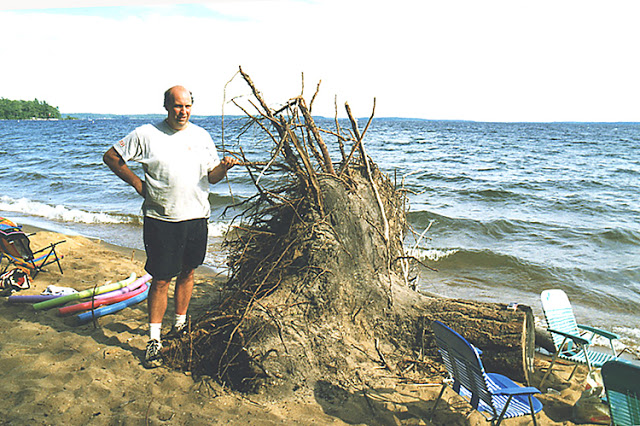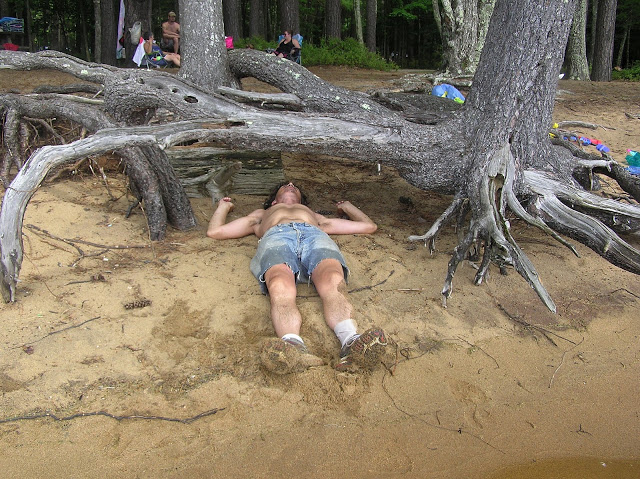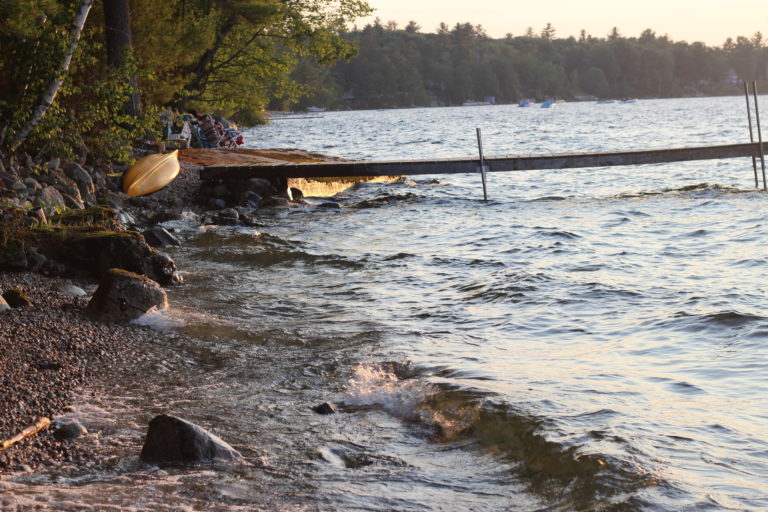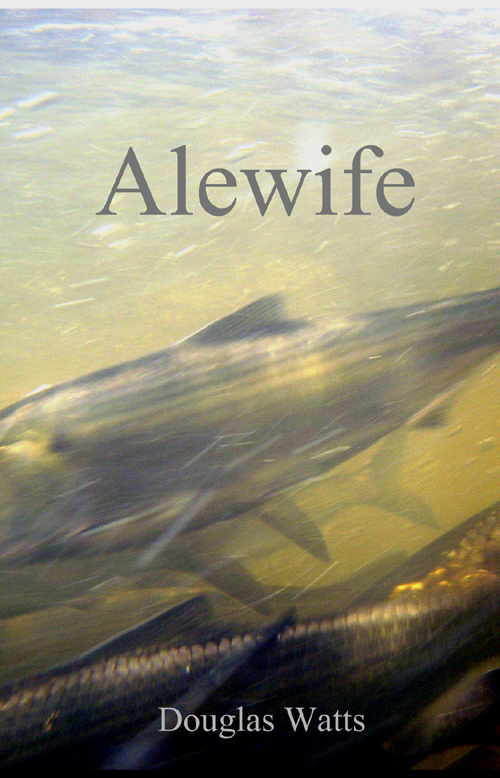
The above photo is from April 1, 1992 at Songo Beach at Sebago Lake State Park. It was taken by geologists with the Maine Geological Survey. On this day the lake was at 263.92 feet msl. The long 2-3 foot high piles of sand were bulldozed up the beach by two-foot thick ice floes being pushed against the shore by the wind when the ice broke up on the lake a few weeks earlier. At the far end of the berm you can see ice floes still piled on top of the sand.

The above photo was taken by the Maine Geological Survey at Songo Beach in late March 1992, just as the ice was breaking up and a week or so before the April 1 photo. Here you can see a long bank of ice floes pushed by the prevailing south winds against the upper section of Songo Beach. It was these floes and chunks of ice that created the berm of sand in the top photo on April 1. Note that this bulldozing process requires a rising lake level, so that the ice floes are pushed up the profile of the beach and in doing so, plow a ridge of sand up with them. But for this type of re-building to work, you need to start with a low winter lake level. If the lake was kept at a stable level year-round, this re-building process would never have a chance to work.

This photo from May 30, 2012 shows a completely different type of beach re-building. This 1.5 foot berm is from wave action alone, as the lake very slowly rose from its winter minimum during the spring, long after ice-out. When you put these two effects together (ice bulldozing in late winter-early spring and wave action from spring to late May), you can see how the lake itself can push hundreds of thousands of tons of sand back up the beaches on its own, and in doing so, replenish the middle and upper profiles of Sebago Lake’s beaches.
The secret to this natural beach rebuilding is maintaining the natural fluctuation of the lake from season to season and ensuring the lake hits a bedrock minimum in the fall and winter and then slowly rises with snowmelt in the spring. At Sebago Lake the natural range in variation which allows this beach rebuilding to occur is about 6 feet of change from lowest to highest each year. Once you artificially eliminate the annual lows, these rebuilding processes do not occur. Instead what you get is the top of the beaches eroding and losing sand without any mechanism to push the sand back up. If that happens each year the tops of the beaches lose sand, the middle of the beaches lose sand, and there is no mechanism to replace the lost sand. Then you start to get concave beach profiles (scalloped downward) instead of convex beach profiles (humping upward). A concave beach profile allows waves at high lake levels to directly pound into the very top of the shore, at the roots of large trees, and then you have 150-year-old trees start to fall down, which is what has been happening at Songo Beach at Sebago Lake State Park for the past 25 years. We know this phenomenon is very recent because the trees falling down are 100 to 150 years old (you can count their rings) and were perfectly healthy until they suddenly fell down.
Note: This is also why vertical concrete seawalls cause more damage than they prevent and in a few decades tend to get undermined. On a vertical seawall all of the high wave energy is focussed at the toe of the seawall and has no place to disperse except straight down, where it erodes away the sand and gravel the wall is built on. On a sloping, porous shoreline, wave energy is highly dispersed up and down the profile and is not forced to ‘dig in’ at one narrow spot. Since you can’t change the energy of the wave, the only thing you can change is how the energy of wave is dispersed when it hits. The least destructive mode is where the wave energy is spread out over as wide an area as possible, ie. a gently sloping and porous shoreline. Natural beaches evolved because they represent the most stable energy distribution of seasonal wave action against a shoreline.




